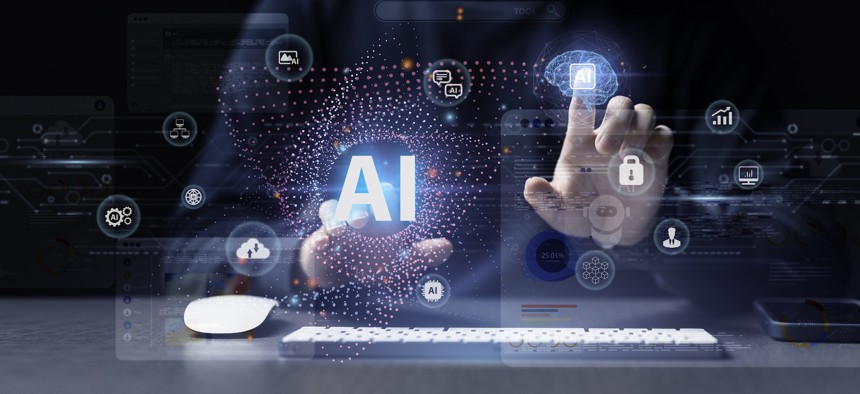Embedding AI in tech modernization plans

Khanchit Khirisutchalual/Getty Images
COMMENTARY | Opportunities exist to accelerate AI adoption across government and use tools like the FITARA Scorecard to ensure effective implementation.
Whether it be simple automated tools like robotic process automation or large language models and generative artificial intelligence, we have already seen the power of AI to take on routine tasks and free up government employees to focus on higher level analytical skills and government decision making. The “Future of Work” is now, and rather than fearing it, we must embrace it. Government still has far too many labor-intensive processes that are ripe for the application of AI and the transformation to digital approaches.
Effective AI adoption presents a powerful opportunity to accelerate decision making, improve evidence-based policymaking, allow research to find new answers and cures and improve customer experience. And, with so many targets to choose from, we must prioritize our efforts on mission-focused outcomes that will have significant impact. In the past, whether it has been the application of AI or digital services, we have often focused on the small things that don’t deliver much payoff, like website enhancements or minor changes to non-mission critical systems. The prize now will be to show how the application of AI will reduce time and friction for processes that impact core government missions.
Yes, challenges do exist, and we must face them head on. First, there’s the need for continued progress on technology modernization at federal agencies. There is a direct correlation between progress on modernization and the ability to adopt new technologies and solutions. Second, agencies must have trained and ready workforces, and we must not lose sight of the fact that those workforces will, by necessity, need to include the participation of private sector partners. There must also be an organization-wide willingness to embrace cultural change.
Most importantly, there is the challenge of ensuring the ethical implementation of AI. You need only spend a few moments online to see the countless examples of everything from deep fakes to fake news that use advanced technologies to divide, rather than unite us, and play to the baser level of our tribal instincts. Left unchecked, these tools will continue to divide us and foster enmity. If you only get AI-curated “truth” from your preferred social media feed, we will continue to face growing hatred and discord as a society. But it doesn’t have to be that way. We can and must harness the power of AI to ensure truth spreads faster than fiction and evidence-based policies and data-driven decisions replace decisions made by fear and anecdote.
Finally, our oversight efforts must place a priority on AI adoption. Implementation of the Federal Information Technology Acquisition Reform Act and its scorecard have had a positive impact. And the fact that members of Congress have expressed a continuing interest in topics like IT governance and technology modernization has made a big difference. There is no doubt that the things that we measure are the things that we focus our time and attention on.
That said, last month saw the release of the 17th edition of the FITARA scorecard. While some revisions have been made to the scorecard, additional change is needed to ensure the continued relevance of this important performance management tool. As the world changes, the scorecard should change too, with a reinvigorated focus on:
- Technology modernization efforts that measure progress in moving to the cloud, retiring, replacing or refreshing legacy systems and the implementation of robust modernization plans.
- Cybersecurity measures that focus on thriving in a web-based virtual world and new approaches like zero trust.
- Customer experience efforts and the shift to digital solutions.
- Making the effective adoption of AI a federal priority.
As we ride the wave of enthusiasm for the adoption of AI tools, we have a corresponding moment of opportunity to move away from the current climate of “gotcha” oversight that focuses on highlighting what has gone wrong, and instead focus on outcomes and measuring the progress of our plans. Imagine a world where a congressional oversight hearing is focused on an agency describing the progress they have made (or didn’t make) against a published and well-understood technology modernization and AI adoption plan Then, instead of pointing out what has gone wrong in the past, we would focus on the opportunities and promise of an even brighter future.
NEXT STORY: Why AI localization makes sense





